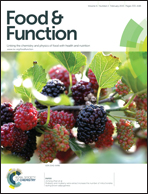Antrodan, A β-glucan obtained from Antrodia cinnamomea mycelia, is beneficial to benign prostate hyperplasia
Abstract
Benign prostatic hyperplasia (BPH), one of the most common disease usually occurring in men in their 50s, has now become an atypical direct cause of mortality. Currently, phytotherapeutic agents are emerging and are frequently used as a complementary alternative treatment of BPH. β-glucan has shown a diversity of bioactivities involving anticancer, immunomodulatory and anti-inflammatory effects. Antrodia cinnamomea exhibits a diversity of biological activities. Only a few literature references have cited the biomedicinal effects of antrodan, which is a unique β-glucan present in A. cinnamomea mycelia. We hypothesized that antrodan could be beneficial to BPH. Using the Sprague–Dawley rat model, we performed this present experiment. Results indicated that antrodan alleviated most of the pathophysiological manifestations that can be elicited by BPH, by alleviating the prostatic epithelial hyperplasia and collagen deposition, increasing the total cholesterol biosynthesis and conversion into HDL, and suppressing the production of LDL and ROS and the upregulation of IL-1, COX-2 and CD68. Antrodan also effectively suppressed the serum level testosterone and DHT and downregulated aromatase, estradiol and the expression of the androgen receptor. More importantly, antrodan downregulated N-cadherin and vimentin and upregulated E-cadherin, underlying the effective inhibition on the epithelial-mesenchymal transition (EMT). Conclusively, the β-glucan antrodan present in the A. cinamomea mycelia is beneficial to the BPH therapy.


 Please wait while we load your content...
Please wait while we load your content...